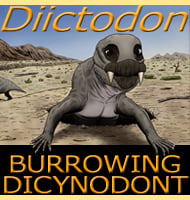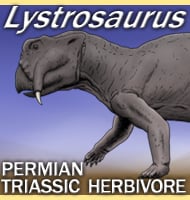Diictodon
In Depth Diictodon was a burrowing dicynodont that appears to have been extremely numerous and widespread. It had a short round body, stubby legs and sharp claws on the front feet, all very good adaptations for burrowing life. Although Diictodon did not build interconnecting burrows with others of its species, evidence suggests that large numbers … Read more

